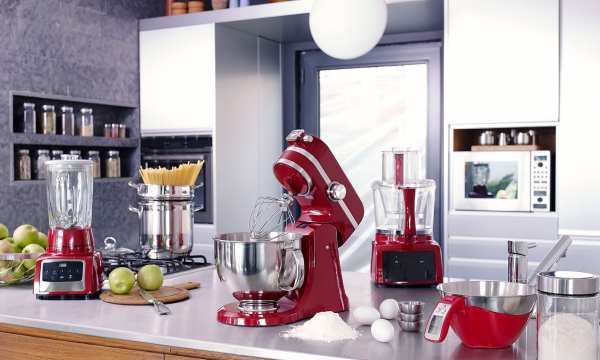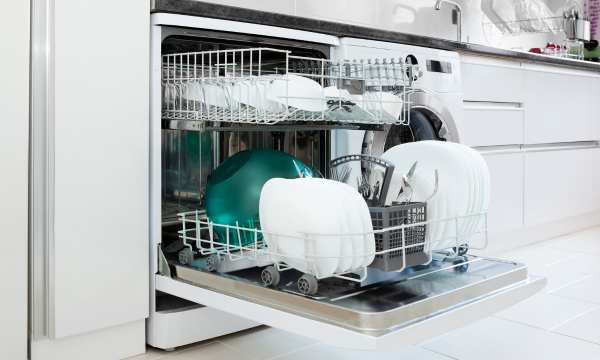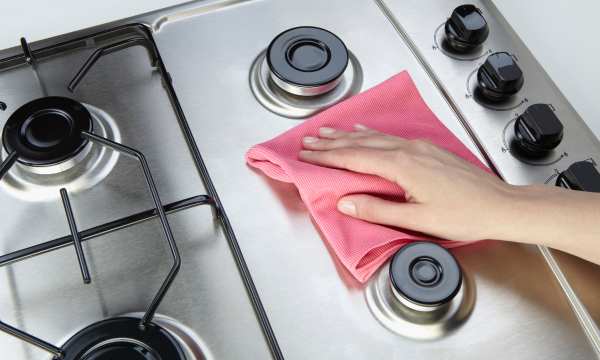Mastering Cooking: A Guide to Kitchen Ovens and Ranges
The oven and stove are the most important parts of any kitchen.
Ad
Cooking is both an art and a science. Whether you’re a beginner or an experienced cook, learning how to use these basic tools can help you improve your cooking skills. In this comprehensive guide, we discuss all the different types of ovens and stoves, and how to use them properly.
Different Types of Ovens
1. Ordinary Air Oven:
Conventional ovens are the norm in most homes. There are heating elements at the top and bottom that generate heat, cooking food through convection. While they are great for everyday baking and cooking, the heat may not be distributed evenly, so you may need to rotate the plate frequently to get the same result.
Ad
2. Convection Oven:
Convection ovens, on the other hand, use fans to move the hot air so that everything cooks evenly. This function not only shortens the cooking time but also makes the food browner and crispier. You can bake delicate desserts, roast meat, and get golden crusts for casseroles in a convection oven.
3. Microwave Food Oven:
Microwave ovens use electromagnetic field waves to heat food quickly. They are great for reheating leftovers and cooking, but they may not be suitable for all cooking methods. On the other hand, many newer microwaves have a convection function that combines convection speed with microwaves even cooking.
4. Toast Oven:
Toasters are ideal for small kitchens or as an extra tool because they are small and versatile. They can roast, bake, grill, and even broil, so they can be used in place of a larger oven for quick meals and snacks.
5. Steam Oven:
Steam ovens use steam to cook food, which not only preserves the food’s nutrients but also makes the food taste better. A steam oven is a healthier option and is ideal for preparing vegetables, seafood, and light desserts. Some types use both steam and convection to get the best of both worlds.
Choose the Right Range
1. Gasoline Range:
Professional chefs love gas stoves because they can precisely control the temperature and heat up quickly. Cooking over an open flame allows you to see what you are doing, but they may use more energy than electric options.
2. Electricity Consumption Range:
Electric stoves have ovens that maintain the same temperature and hobs that are smooth and easy to clean. An induction cooktop is an electric stove that uses electromagnetic fields to heat food quickly and efficiently. However, it may take some time for them to adjust to the new heat source.
3. Range of Two Fuels:
Dual Fuel stoves come with both a gas hob and an electric oven, so you get the best of both worlds. This function allows you to precisely control the temperature of cooking on the hob and baking in the oven.
4. Scope of Professional Style:
Professional stoves typically have powerful burners and large oven capacities and are common in commercial kitchens. Despite their high price, they are a dream for home cooks who want the best food possible.
Oven and Stove Functions
1. Self-cleaning:
Look for ovens that clean themselves for easier maintenance. When this option is selected, the oven is heated to a higher temperature, converting food residue into ash that can be easily wiped away.
2. Convection Cooking:
For more even cooking, choose an oven that has convection. Some types have multiple convection fans, which help dissipate heat further.
3. Temperature Probe:
A built-in temperature probe allows you to check the internal temperature of your meat to ensure it is fully cooked. This is especially useful for getting ribs and chicken to the right doneness.
4. Warming Drawer:
Some ranges come with a warming drawer to keep food at the perfect serving temperature. These drawers make cooking easier and are ideal for inviting people over.
5. Intelligent Technology:
Many new ovens and stoves have smart functions built into them. With Wi-Fi, you can control the appliance remotely, change cooking settings, and even receive notifications on your phone.
Tips for Optimal Oven Use
- Preheating: Always preheat food to the correct temperature before placing it in the oven. This guarantees even cooking and optimal results.
- Place the racks correctly: Place the oven racks in the correct position for the dish you are cooking. For best results, follow the recipe for how to install the rack.
- Use a good griddle: Spend money on a good griddle to ensure that the heat is evenly distributed and the food doesn’t cook unevenly. The non-stick surface makes removing and cleaning up food easy.
- Regular maintenance: To keep your oven and stove in good condition, follow the maintenance instructions provided. Clean up spills immediately and schedule thorough cleaning regularly.
- Try and learn: Don’t be afraid to try different cooking methods and ideas. Understanding how your oven and hob work can help you become a more flexible and confident cook.
Conclusion
In short, if you want to become a great chef, you must first learn everything there is to know about ovens and stoves. You need to choose appliances that suit the way you cook, take advantage of their features, and continue to explore the endless ways they can be used. If you have the right skills and a little imagination, you can turn any meal into a culinary masterpiece.
FAQs
1. What is the main difference between a conventional oven and a convection oven?
They differ in the way the heat is distributed. Regular ovens have their heat sources at the top and bottom, which often results in uneven cooking. Convection ovens, on the other hand, use fans to move hot air, which makes the food more even and speeds up the roasting or roasting process.
2. Can a microwave be used for all types of preparations?
Microwave ovens are great for certain cooking tasks and reheating leftovers, but they may not be everything. However many newer models have convection capabilities, which combine the fast cooking of a microwave with the even cooking of convection. This makes them more useful in more situations.
3. What are the advantages of using a dual-fuel stove?
These heaters offer the benefits of both gas and electricity. This allows you to precisely control the temperature on your gas stove or even bake in the oven, with the benefits of fast heating and maintaining a stable temperature.
4. Why should I consider purchasing a heater with smart technology?
With smart technology like Wi-Fi connectivity, heaters allow you to control your appliances remotely. This feature allows you to change cooking settings, receive notifications on your phone, and make managing your kitchen easier.
5. How important is it to preheat the oven first?
Preheating is very important for good cooking and best results. It ensures that the oven reaches the correct temperature before the food is placed in the oven. This prevents food from cooking unevenly and ensures that your recipes come out perfectly.
6. What is the use of a temperature probe in an oven?
With the built-in temperature probe you can correctly check the internal temperature of your meat. This function allows you to cook your ribs and chicken to the right doneness so that they are fully cooked.
 Budget Kitchen Appliances with Quality
Budget Kitchen Appliances with Quality
In this busy world, having well-functioning and reliable kitchen tools is important for a smooth cooking experience. […]
More Effortless Cleaning: The Ultimate Dishwasher Buying Guide
Effortless Cleaning: The Ultimate Dishwasher Buying Guide
Ease of use is very important these days and a dishwasher can make work in the kitchen […]
More Essential Kitchen Appliance Maintenance Tips
Essential Kitchen Appliance Maintenance Tips
Keeping your kitchen clean and running smoothly isn’t just about keeping your countertops and dishes clean; It […]
More